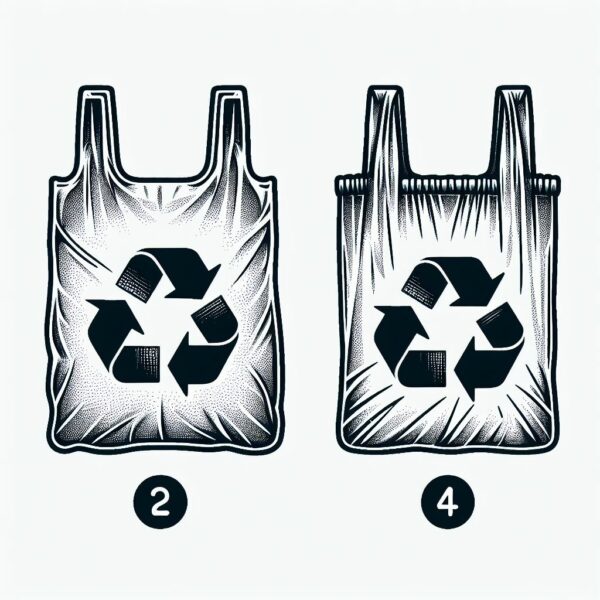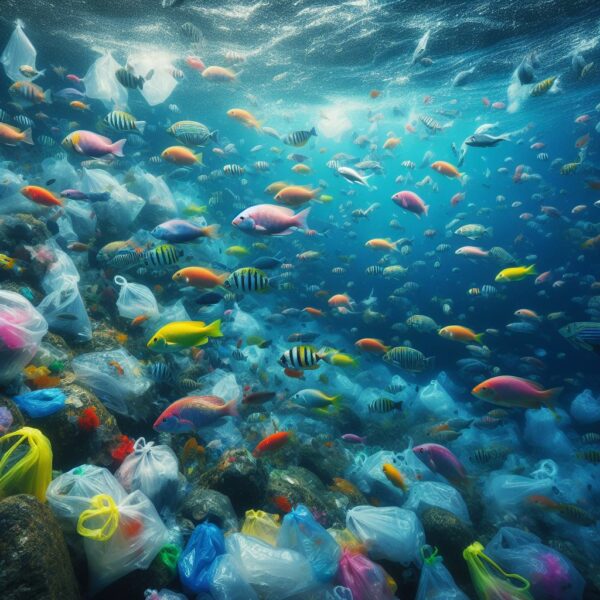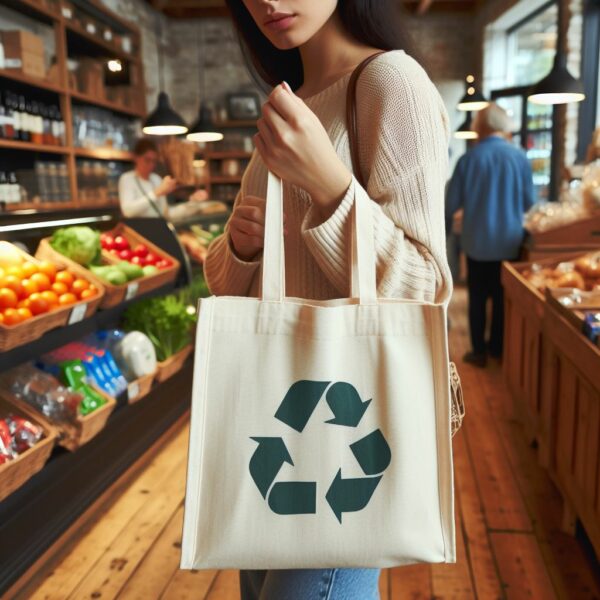How to Recycle Plastic Bags
Plastic bags are used everywhere, when you go to the store, it is often the plastic bags that are used there. And although some store chains are switching to paper and other bags, the total amount of plastic waste is not decreasing.
Why do plastic bags need to be recycled?
Plastic bags are commonly made from polyethylene, with two main types: Low-Density Polyethylene (LDPE) #4 for flexibility and transparency, and High-Density Polyethylene (HDPE) #2 for durability. The manufacturing process involves extrusion, forming a thin layer that is folded and sealed. Plastic pollution concerns have led to discussions about more sustainable alternatives.

Regarding decomposition, polyethylene, especially LDPE, degrades very slowly in typical landfill conditions. Its resistance to decomposition contributes to environmental issues. While recycling is an option, it’s crucial to address the challenges of plastic waste in various ecosystems. Efforts towards proper disposal, recycling infrastructure, and the development of biodegradable alternatives are essential for mitigating the environmental impact of plastic bags.
Once in water bodies, under the influence of natural factors, plastics that do not have the proper amount of d2w additive in their composition disintegrate into tiny particles a few millimeters in size, which poison drinking water and enter the food chain of fish, animals, birds and, eventually, humans.

How do you reduce your environmental impact?
Reducing plastic waste is crucial for environmental sustainability. Here are some tips on minimizing plastic waste:
- Choose Reusables: Opt for reusable bags, shoppers, or backpacks when heading to the store. Bring your own bags for groceries and other purchases to significantly reduce the need for single-use plastic bags.
- Invest in Durable Options: Consider investing in durable and long-lasting reusable bags made from materials like canvas, jute, or recycled plastics. These alternatives can withstand multiple uses, reducing the overall demand for disposable plastic bags.
- Reuse Purchased Plastic Bags: If you end up with plastic bags from a previous purchase, find ways to reuse them. They can be handy for future shopping trips, organizing items at home, or as small trash bags. Reusing them helps extend their lifespan and minimizes the need for new ones.
- Prepare Bags for Recycling: When plastic bags reach the end of their useful life, it’s crucial to prepare them properly for recycling. Most recycling centers accept clean and dry plastic bags. Ensure they are free of any food residues, liquids, or non-recyclable items. If possible, check with your local recycling facility for specific guidelines.
- Use Collection Bins: Some grocery stores have dedicated bins for recycling plastic bags. Collect your used bags and bring them back to these bins during your next shopping trip. This ensures that the bags are sent to the appropriate recycling facilities.
- Explore Alternative Recycling Options: Some communities offer specialized recycling programs or drop-off locations for plastic film, including bags. Research local recycling initiatives to find the most suitable option for recycling plastic bags in your area.
- Spread Awareness: Share these tips with friends, family, and your community to raise awareness about the importance of reducing plastic waste. Encourage others to adopt eco-friendly practices when shopping to collectively make a positive impact on the environment.
Remember, small changes in individual behavior can collectively contribute to significant reductions in plastic waste and promote a more sustainable future.

Plastic Bag Recycling Process
In industrial settings, plastic bag recycling involves more sophisticated processes. Here are common methods used in industrial plastic bag recycling:
- Mechanical Recycling:
- Collection and Sorting: Plastic bags are collected and sorted at recycling facilities. Advanced machinery, such as conveyor belts and optical sensors, is used to separate plastic bags from other recyclables.
- Cleaning: The collected plastic bags undergo a thorough cleaning process to remove any contaminants, labels, or residues.
- Shredding and Melting: The cleaned plastic bags are shredded into small pieces or pellets. These pellets are then melted and formed into new plastic products.
- Agglomeration:
- Collection and Grinding: Plastic bags are collected and ground into small pieces.
- Agglomeration: The ground plastic is then subjected to heat and pressure to form agglomerates, which are small, easily transportable pellets.
- Extrusion: The agglomerates are extruded into the desired shapes, creating new products.
- Pyrolysis:
- Heating in the Absence of Oxygen: In this process, plastic bags are heated in the absence of oxygen to prevent combustion. This leads to the breakdown of the plastic into gases and liquid products.
- Condensation: The gases produced are condensed into a liquid, which can be used as fuel or as a feedstock for chemical processes.
- Chemical Recycling:
- Depolymerization: Plastic bags are broken down into their chemical building blocks through depolymerization processes.
- Reforming: These building blocks are then reformed into new plastic materials, closing the recycling loop.
- Biodegradation Additives (d2w):
- Incorporating Additives: Some industrial processes involve using plastic bags with biodegradation additives, like d2w. These additives facilitate faster breakdown when exposed to environmental conditions.
